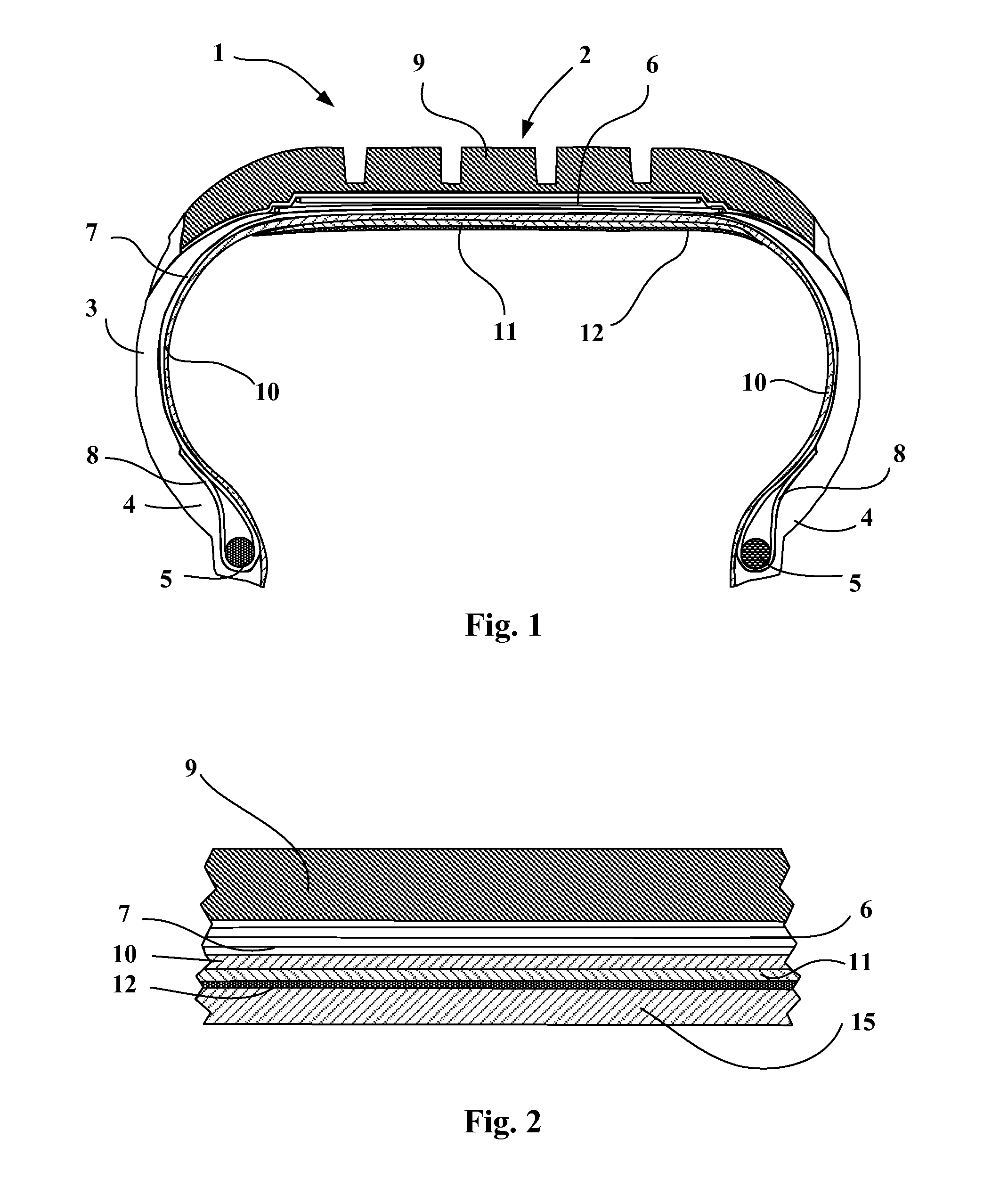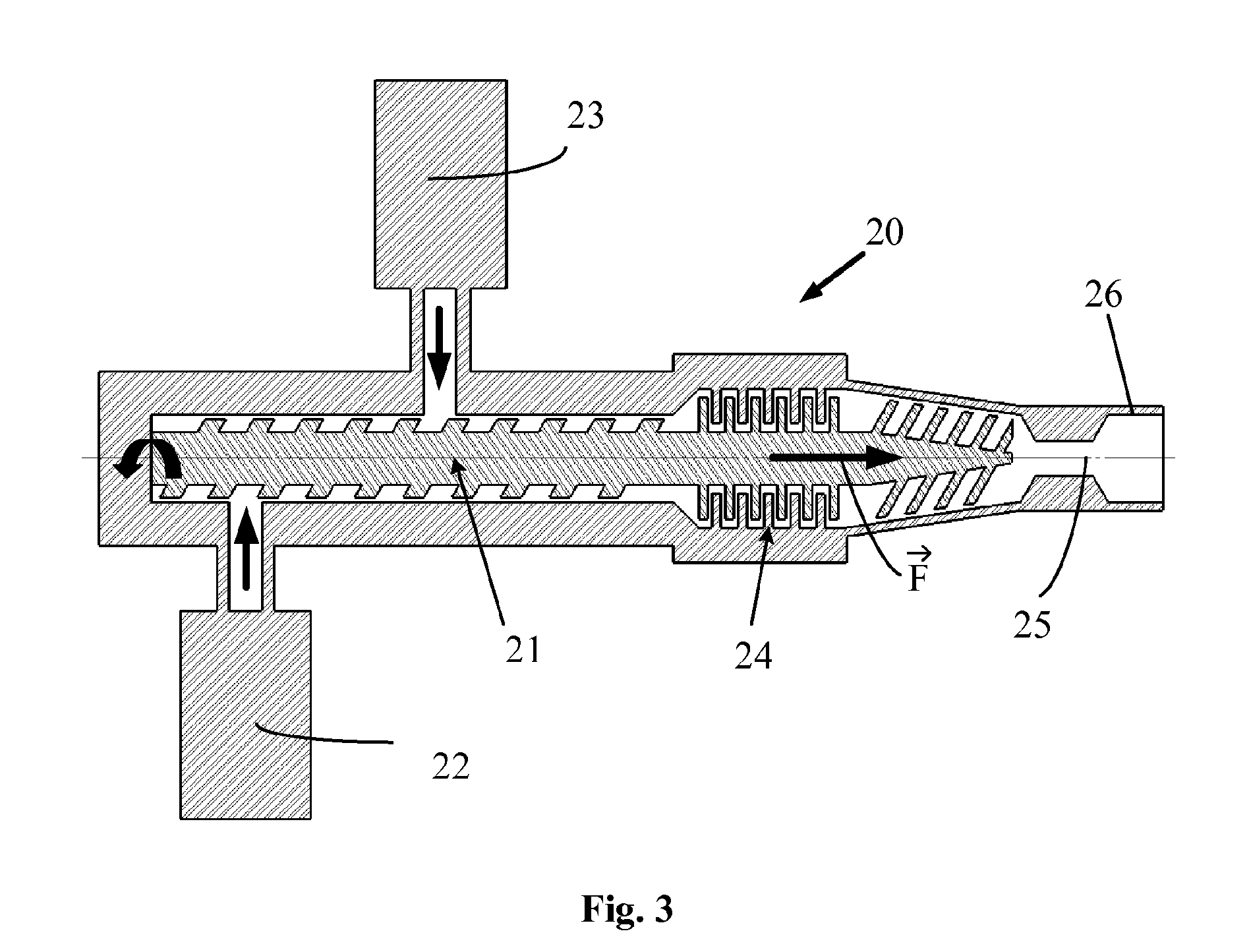Tyre having a built-in self-sealing layer
a self-sealing layer and tyre technology, applied in the field of tyres, can solve the problems of reducing life, reducing the service life, and the conventional use of anti-tack agents, such as whitewashes or silicone-containing liquids, is completely inadequate to solve the problem of soon to be scrapped
- Summary
- Abstract
- Description
- Claims
- Application Information
AI Technical Summary
Benefits of technology
Problems solved by technology
Method used
Image
Examples
first embodiment
[0014] the particles are short fibres with diameters of between 10 and 200 μm and lengths of between 1 and 5 mm.
[0015]Such fibres are advantageously selected from the group consisting of cotton fibres, aramid fibres, glass fibres and mixtures thereof.
second embodiment
[0016] the particles are lamellar fillers.
[0017]These lamellar fillers are advantageously selected from the group consisting of graphites, phyllosilicates and mixtures of such fillers.
[0018]Graphites, micas and talcs and mixtures thereof are advantageously chosen.
[0019]The thickness of the anti-tack layer is advantageously less than 500 μm, and very advantageously less than 100 μm. It may be between 30 and 50 micrometers.
[0020]Such anti-tack layers comprised of particles or fibres may also be used by applying them during the second phase in the manufacture of the tyre, which is the finishing phase just prior to vulcanization.
[0021]As described earlier, such anti-tack layers comprised of particles or fibres mean that the tyre can be built practically eliminating all the problems associated with the intrinsically very high tack of the self-sealing layers. The anti-tack layer serves to separate the self-sealing layer on the one hand from the tyre-building drum and then the finishing dr...
PUM
| Property | Measurement | Unit |
|---|---|---|
| lengths | aaaaa | aaaaa |
| lengths | aaaaa | aaaaa |
| diameters | aaaaa | aaaaa |
Abstract
Description
Claims
Application Information
 Login to View More
Login to View More - R&D
- Intellectual Property
- Life Sciences
- Materials
- Tech Scout
- Unparalleled Data Quality
- Higher Quality Content
- 60% Fewer Hallucinations
Browse by: Latest US Patents, China's latest patents, Technical Efficacy Thesaurus, Application Domain, Technology Topic, Popular Technical Reports.
© 2025 PatSnap. All rights reserved.Legal|Privacy policy|Modern Slavery Act Transparency Statement|Sitemap|About US| Contact US: help@patsnap.com


